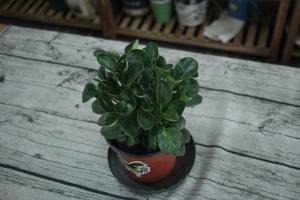Introduction
If you have a tropical plant, it's important to know how often you should water it. Tropical plants come from warm and humid climates where they receive more rainfall compared to other regions. This means that they require a different watering schedule than other houseplants. In this article, we’ll explore how often you should water a tropical plant so that it thrives in your home.
Understanding Your Plant
Before you start watering your tropical plant, it's essential to understand your plant's specific requirements. Different plants have different watering needs, depending on various factors such as the plant’s size, type, and environment. Some tropical plants may require regular watering, while others can go for long periods without water.
To determine how often you should water your tropical plant, you should consider factors such as the soil type, humidity, temperature, and the amount of light it receives. Most tropical plants require a moist but well-draining soil; this allows the plant to absorb water and nutrients but also prevents the roots from becoming waterlogged.
Watering Schedule
The frequency of watering your tropical plant depends on various factors, including the plant's current health, environment, and overall conditions. However, a general guideline for watering tropical plants is once a week or when the soil feels dry to the touch.
It's important not to overwater your tropical plant as this can lead to root rot or fungal infection. You should ensure that the soil is moist but not too wet, and it should never stand in water. Additionally, you should avoid watering your tropical plant during the evening as the cooler temperatures can lead to fungal growth.
Factors to Consider
When deciding on a watering schedule, you should also consider other factors that can impact your plant's water requirements. For example, if your plant is in a small container or has a shallow root system, it may require more frequent watering. In contrast, a larger plant in a larger container may require less watering as it can hold more water.
Other factors to consider include the plant's location, season, and the amount of sunlight it receives. During the hot summer months, your tropical plant may require more frequent watering than in the cooler months. Similarly, if your plant is located in a dry and windy area or near a heat source, it may need more watering.
Signs of Overwatering and Underwatering
It's important to monitor your plant's watering needs and watch for signs of overwatering or underwatering. Overwatering can lead to yellowing leaves, mushy or rotten roots, and wilting. In contrast, underwatering can cause the leaves to wilt, turn brown, or crispy. If you notice these signs, adjust your watering schedule accordingly and ensure that the plant receives adequate water without being overwatered.
Conclusion
Watering your tropical plant correctly is essential for maintaining its health and vibrancy. Understanding your plant's watering needs, monitoring its condition, and adjusting your watering schedule as required can ensure that your plant thrives in your home. Remember to avoid overwatering, consider your plant's specific requirements, and watch for signs of overwatering or underwatering to keep your tropical plant healthy and flourishing.

 how many times do yo...
how many times do yo... how many planted tre...
how many planted tre... how many pine trees ...
how many pine trees ... how many pecan trees...
how many pecan trees... how many plants comp...
how many plants comp... how many plants can ...
how many plants can ... how many plants and ...
how many plants and ... how many pepper plan...
how many pepper plan...





























